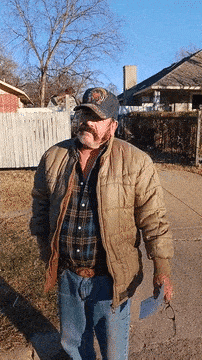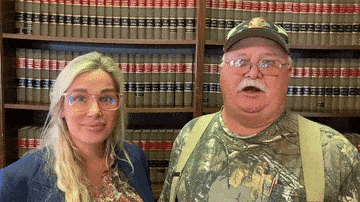“Texas Tough” McKay Law
Texas Unsafe or Hazardous Conditions Lawyer
When unsafe or hazardous conditions disrupt lives, McKay Law stands as a trusted advocate for justice in Texas. With deep expertise in navigating complex legal claims, the firm is dedicated to holding negligent parties accountable and fighting tirelessly for the compensation their clients deserve. Committed to personalized representation, McKay Law combines sharp legal strategies with a compassionate approach, ensuring every client feels supported at every step.
NO FEES UNLESS WE WIN!
We only get paid when you get paid.
Receive Immediate Medical Care
Get the medical attention you need with no out-of-pocket cost in most cases.
24/7 Access To Us
We are here for you 24/7 so you can focus on healing.
Client Satisfaction
McKay Law has a reputation to be proud of with 300+ 5 star Google Reviews.
Texas Unsafe or Hazardous Conditions Attorney | McKay Law
McKay Law stands out as a leading advocate for individuals harmed by unsafe or hazardous conditions in Texas. With extensive expertise in personal injury law, the firm focuses on tackling complex cases involving dangerous premises, workplace hazards, and unsafe environments. Their legal team is skilled at investigating claims, identifying liable parties, and securing rightful compensation for victims. McKay Law’s proficiency and attention to detail ensure that every case is handled thoroughly, offering clients reassurance during challenging times.
Committed to justice, McKay Law fights relentlessly to protect the rights of victims who’ve suffered due to negligence. Whether the issue involves a preventable slip-and-fall incident, an improperly maintained property, or unsafe working conditions, the firm’s mission is to hold wrongdoers accountable. They understand the emotional and financial toll hazardous conditions can take on individuals and families, striving to alleviate their burden through relentless advocacy and personalized legal strategies.
With a strong reputation across Texas as a trusted legal ally, McKay Law is known for their compassionate and results-driven approach. They take pride in keeping clients informed at every stage of the legal process and ensuring their voices are heard. If you or a loved one has been hurt due to unsafe or hazardous conditions, McKay Law encourages you to reach out for a free, no-obligation consultation. Their team is ready to help you pursue the justice and compensation you deserve. Contact McKay Law today to start your path toward recovery.
Understanding Unsafe or Hazardous Conditions Injury Claims in Texas
What Are Unsafe or Hazardous Conditions Injury Claims?
These claims arise when someone is injured due to dangerous conditions on someone else’s property. In Texas, these are often referred to as premises liability claims. Common examples include:
- Slips and falls on wet or uneven surfaces
- Injuries caused by falling objects
- Poor lighting leading to accidents
- Unsafe construction zones
- Lack of proper warnings for hazards
Key Elements of a Claim
To succeed in a hazardous conditions injury claim in Texas, the injured party typically needs to prove:
- Duty of Care: The property owner or occupier owed a duty to keep the premises reasonably safe.
- Breach of Duty: The owner failed to address or warn about the hazardous condition.
- Causation: The hazardous condition directly caused the injury.
- Damages: The injured party suffered actual harm (e.g., medical bills, lost wages, pain and suffering).
Texas Laws and Considerations
- Comparative Negligence: Texas follows a modified comparative negligence rule. If the injured party is found to be more than 50% at fault, they cannot recover damages.
- Statute of Limitations: In Texas, the injured party generally has two years from the date of the injury to file a claim.
- Types of Visitors: The duty of care owed depends on whether the injured person was an invitee, licensee, or trespasser.
Common Defenses by Property Owners
- The hazard was “open and obvious.”
- The injured party was not paying attention or acted negligently.
- The property owner had no knowledge of the hazard and could not have reasonably discovered it.
Lindsey McKay Takes Texas Unsafe or Hazardous Conditions Injury Cases Seriously
Suffering an injury due to unsafe or hazardous conditions can be an overwhelming experience. From mounting medical bills to the inability to work, victims are often left grappling with both physical and emotional turmoil. For Texans who find themselves facing these challenges, Lindsey McKay is a trusted advocate who takes their cases seriously and works tirelessly to deliver justice.
With years of experience in personal injury law and a reputation for compassion and tenacity, Lindsey McKay is the ally you need when injury strikes due to unsafe conditions. Whether it’s a slip-and-fall accident, an improperly secured construction site, or neglected property maintenance, Lindsey is here to guide you through the process and fight for the compensation you deserve.
Understanding Injuries Caused by Unsafe Conditions
Hazardous conditions can arise almost anywhere—on sidewalks, in workplaces, at shopping centers, or even in someone’s home. Common examples of unsafe conditions that lead to injuries include:
- Slippery surfaces without proper signage
- Uneven flooring or stairways lacking handrails
- Falling objects, especially in stores or construction zones
- Failure to maintain buildings or grounds, resulting in hazards like broken pavement
- Environmental dangers such as exposed wires or toxic substances
Too often, these conditions are the result of property owners’ or businesses’ negligence. When that happens, victims face a host of challenges as they try to deal with the aftermath of their injuries.
The Personal Costs of Unsafe Condition Injuries
For many, the consequences of an injury caused by a hazardous condition extend far beyond the initial accident. Here are some of the struggles victims commonly face:
- Medical expenses: From emergency room bills to ongoing physical therapy, the costs can add up quickly.
- Lost wages: Injuries may cause you to miss work, leaving you and your family financially vulnerable.
- Physical pain and emotional distress: Recovery can take a heavy toll on your mental and physical well-being.
- Legal uncertainty: Many people are unsure whether they even have a case, leading them to forgo the compensation they’re entitled to.
It’s often difficult to know where to begin, but with Lindsey McKay advocating for you, the path forward becomes clear.
Why You Need Lindsey McKay on Your Side
Lindsey McKay is more than just an experienced personal injury attorney—she is a champion for those who have been wronged by negligence. Here’s why Texans trust her with their unsafe or hazardous condition injury cases:
1. Expertise That Counts
Lindsey has spent years honing her craft in personal injury law, with a specific focus on cases involving unsafe and hazardous conditions. She understands the nuances of Texas premises liability laws and uses this knowledge to build strong cases for her clients.
2. Compassionate Yet Determined
Lindsey recognizes that behind every case is a human being whose life has been turned upside down. Her compassionate approach ensures that clients feel heard and supported throughout the process, while her relentless pursuit of justice guarantees she won’t back down until justice is served.
3. Tailored Advocacy
Every injury and every case is unique. Lindsey takes the time to thoroughly investigate each situation, gathering evidence, consulting experts, and crafting a personalized legal strategy to maximize results for her clients.
4. Negotiation and Litigation Mastery
Whether negotiating a fair settlement with insurance companies or representing clients in court, Lindsey is a skilled advocate who knows how to secure favorable outcomes. Her track record speaks for itself.
5. No Upfront Costs
Lindsey works on a contingency fee basis, meaning you don’t pay anything unless she wins your case. This ensures her clients can focus on their recovery without worrying about legal fees.
How Lindsey McKay Helps Victims Navigate the Legal Process
When you’ve been injured, the legal process can seem overwhelming. However, Lindsey McKay ensures every step is handled with professionalism and efficiency, allowing you to focus on healing. Here’s how she guides clients:
- Initial Consultation:
Lindsey provides a free, no-obligation consultation to discuss the details of your case. This is an opportunity to ask questions and learn about your rights.
- Building a Strong Case:
Lindsey carefully investigates your accident, collecting evidence such as photos, witness statements, accident reports, and medical records. She works diligently to establish clear liability.
- Calculating Damages:
From medical bills to lost wages and intangible damages like pain and suffering, Lindsey ensures every aspect of your injury is accounted for.
- Dealing with Insurance:
If an insurance company is involved, Lindsey handles all communications and negotiations, protecting you from lowball offers.
- Court Representation:
Should your case go to trial, Lindsey is a fearless litigator prepared to advocate for you in front of a judge and jury.
Don’t Settle for Less—Choose Justice
If you’ve suffered an injury due to unsafe or hazardous conditions, you shouldn’t have to suffer alone. Lindsey McKay is here to help you regain control of your life, holding negligent parties accountable and fighting for the compensation you need to move forward.
Contact Lindsey McKay Today
Don’t wait—injury cases involving hazardous conditions are often time-sensitive. The sooner you take action, the stronger your case can be. Reach out today for a free consultation and take the first step toward reclaiming your rights.
What Are The Most Common Types of Unsafe or Hazardous Conditions Injuries In Texas?
Unsafe or hazardous conditions can lead to various types of injuries, especially in a state like Texas, where industries such as construction, oil and gas, and agriculture are prevalent. Here are some of the most common types of injuries caused by unsafe or hazardous conditions:
1. Slip and Fall Injuries
- Caused by wet floors, uneven surfaces, poor lighting, or lack of proper signage.
- Common injuries include fractures, sprains, head injuries, and back injuries.
2. Workplace Injuries
- Particularly common in high-risk industries like construction, oil and gas, and manufacturing.
- Includes falls from heights, machinery accidents, burns, and exposure to toxic substances.
3. Motor Vehicle Accidents
- Unsafe road conditions, poor signage, or construction zone hazards can lead to accidents.
- Injuries range from whiplash and broken bones to traumatic brain injuries (TBI).
4. Defective Product Injuries
- Caused by unsafe or poorly designed products, such as machinery, tools, or consumer goods.
- Injuries can include burns, lacerations, or even amputations.
5. Premises Liability Injuries
- Occur on someone else’s property due to unsafe conditions like broken stairs, exposed wiring, or unsecured swimming pools.
- Common injuries include head trauma, spinal injuries, and drowning incidents.
6. Burn Injuries
- Result from fires, explosions, or exposure to chemicals.
- Common in industrial settings or due to defective products.
7. Toxic Exposure
- Involves exposure to hazardous chemicals, asbestos, or other toxic substances.
- Can lead to respiratory issues, skin conditions, or long-term illnesses like cancer.
8. Dog Bites and Animal Attacks
- Often occur due to negligent pet owners.
- Injuries include puncture wounds, infections, and emotional trauma.
9. Electrocution
- Common in construction or industrial settings due to exposed wiring or faulty equipment.
- Can result in severe burns, nerve damage, or even death.
10. Structural Collapses
- Includes building collapses, scaffolding failures, or falling debris.
- Injuries range from minor cuts to life-threatening trauma.
What Damages Can I Receive from a Texas Unsafe or Hazardous Conditions Accident Claim?
Accidents caused by unsafe or hazardous conditions can result in serious, life-changing consequences, impacting victims physically, emotionally, and financially. These incidents can range from slip-and-fall accidents on wet floors to injuries caused by poorly maintained walkways or inadequate security measures. Property owners in Texas have a legal responsibility, known as “premises liability,” to maintain their property in a way that ensures the safety of visitors. This duty extends to grocery stores, restaurants, apartment complexes, private residences, and even public spaces. When property owners fail to uphold this duty and accidents occur as a result, victims may suffer significant harm, often requiring extensive medical treatment, time away from work, and long-term recovery efforts.
Under Texas law, victims have the right to seek compensation through an accident claim if their injuries were caused by a property owner’s negligence. These claims are designed to help cover a variety of costs, including medical expenses, lost income, rehabilitation, and other related losses. Compensation may also extend to non-economic damages, such as pain and suffering, emotional distress, or loss of enjoyment of life, which can be equally challenging to endure.
But what kind of damages can you recover in such cases? Understanding the types of compensation available is essential for ensuring you receive the financial and emotional support you need to recover and rebuild your life after such an incident. This blog will break down the common types of damages awarded in premises liability claims involving unsafe or hazardous conditions in Texas. We’ll cover both economic damages, which include tangible costs like hospital bills and lost wages, and non-economic damages, which address the emotional and psychological toll of an accident.
Knowing your rights and the compensation you may be entitled to is a critical step in holding negligent property owners accountable and moving forward after an accident. If you or a loved one has been injured due to hazardous conditions on someone else’s property, understanding the legal process and the remedies available can make a significant difference in your recovery journey.
Economic Damages
Economic damages cover the measurable financial losses caused by an accident. These are tangible costs that can be calculated with receipts, bills, and verified financial records. Victims often claim the following economic damages after an accident:
1. Medical Expenses
Medical costs are often the most immediate and overwhelming financial burden after an accident. Economic damages in this category can include:
- Hospital stays
- Emergency room visits
- Medication and prescriptions
- Physical therapy or rehabilitation
- Ongoing medical treatments or in-home care
For example, if you slip and fall due to a wet floor in a grocery store and break your arm, you could claim reimbursement for the ER visit, surgery, follow-up doctor appointments, and even physical therapy to regain full mobility.
2. Lost Wages
When an injury forces you to miss work, your lost income can be claimed as part of your damages. This includes:
- Wages or salary lost during your recovery
- Lost earning capacity if your injury prevents you from returning to the same type of job or results in long-term disability
For instance, if a construction worker slips on an improperly marked hazard on a job site and can no longer perform heavy labor, they may be entitled to compensation for projected long-term income loss.
3. Property Damage
If any personal property was damaged during the accident, you might also receive compensation. For example, if falling debris from a poorly maintained building damages your car, those repair or replacement costs could be included in your claim.
4. Miscellaneous Costs
Accidents sometimes cause victims to incur additional expenses, such as transportation to medical appointments, childcare costs, or home modifications to accommodate disabilities. Keep detailed records of these expenses, as they may also be reimbursable.
Non-Economic Damages
Not all damages are tied to financial losses. Non-economic damages compensate victims for the pain, suffering, and emotional toll caused by their injuries. These losses, while more subjective, are equally significant and often include:
1. Pain and Suffering
This refers to the physical discomfort or pain caused by your injuries. Texas courts consider the severity of your injury, your recovery timeline, and how the injury impacts your daily life when determining compensation for pain and suffering.
2. Emotional Distress
Serious accidents can leave victims with emotional or psychological trauma. For example, debilitating anxiety, depression, or post-traumatic stress disorder (PTSD) are common after severe accidents. Treatment costs for therapy or counseling can be included in your damages.
3. Reduced Quality of Life
If your injuries prevent you from enjoying life as you did before the accident, you may receive compensation for this loss. This includes situations where victims can no longer engage in their favorite hobbies, social activities, or relationships due to their injuries.
4. Loss of Consortium
When an accident negatively impacts a victim’s relationship with their spouse or family, it can lead to damages for loss of companionship, affection, or intimacy. While these are challenging to quantify, they are an important part of a personal injury claim.
Non-economic damages can vary widely since they rely on factors such as the severity of your injuries and the long-term impact on your life. It’s crucial to work with an experienced personal injury attorney to ensure these losses are accurately valued.
Punitive Damages
Punitive damages, also called exemplary damages in Texas, are less common than economic and non-economic damages. These are not meant to compensate you for a loss but rather to punish the property owner or responsible party for particularly reckless or malicious behavior.
When Are Punitive Damages Awarded?
- Situations involving extreme negligence, such as a property owner knowingly ignoring a dangerous condition
- Cases involving intentional misconduct or gross indifference to safety
For example, if a landlord is aware of faulty railings on an apartment staircase but fails to fix them despite repeated complaints, and a tenant is subsequently injured, punitive damages might apply.
It’s important to note that punitive damages are awarded at the court’s discretion and are meant to deter similar behavior in the future.
Why You Need a Personal Injury Attorney
The process of filing a claim and proving damages can be overwhelming, especially when dealing with serious injuries. A personal injury attorney can help you:
- Investigate the accident and identify liable parties
- Gather evidence to establish negligence
- Accurately calculate and prove both economic and non-economic damages
- Negotiate with insurance companies or represent you in court, if necessary
Don’t risk leaving money on the table by going it alone. A skilled attorney ensures you get the maximum compensation you deserve.
Final Thoughts
From medical expenses to emotional suffering, accidents caused by unsafe or hazardous conditions can take a massive toll on your life. Whether you’re dealing with tangible financial costs, non-economic hardships, or punitive damages, it’s important to understand your rights as a victim.
If you’ve been injured on someone else’s property in Texas, don’t wait to seek the compensation you’re entitled to. Reach out to an experienced personal injury attorney today to discuss your case and take the first steps toward rebuilding your life.
The Texas Tough Difference
See why so many others choose McKay Law, PLLC
With over 300 five-star reviews, McKay Law, your local Personal Injury Law Firm has earned the trust and gratitude of our clients. Every case we handle is unique, and every client’s story matters. Don’t just take our word for it—hear directly from our clients about their experiences and why they confidently recommend us to others.
Unsafe or Hazardous Conditions FAQs
An unsafe or hazardous accident refers to an incident caused by unsafe conditions, behaviors, or hazards that result in injury, property damage, or environmental harm. Examples include slips and falls, chemical spills, machinery malfunctions, or fires.
The most common causes include:
- Lack of proper training
- Failure to follow safety protocols
- Poor maintenance of equipment
- Unsafe working conditions (e.g., wet floors, exposed wires)
- Human error or negligence
- Ensure your safety and the safety of others.
- Report the incident to a supervisor or authority.
- Provide first aid if trained and necessary.
- Secure the area to prevent further harm.
- Document the incident with photos and written details.
Both employers and employees share responsibility. Employers must provide a safe working environment, proper training, and safety equipment. Employees must follow safety protocols and report hazards.
Legal consequences vary but may include fines, lawsuits, compensation claims, or even criminal charges if negligence is proven. Employers may face penalties for failing to comply with safety regulations.
- Conduct regular safety training.
- Perform routine equipment inspections.
- Enforce safety protocols and guidelines.
- Use personal protective equipment (PPE).
- Identify and mitigate potential hazards proactively.
Employees have the right to:
- Report the accident without fear of retaliation.
- Receive medical treatment and compensation for injuries.
- Access workplace safety records.
- Refuse unsafe work conditions.
The Occupational Safety and Health Administration (OSHA) sets and enforces safety standards, provides training, and ensures workplaces comply with regulations to prevent accidents and injuries.
Long-term effects can include:
- Physical injuries or disabilities
- Emotional trauma or PTSD
- Financial burdens from medical bills or lost wages
- Legal or reputational damage for employers
- Evacuate the area immediately.
- Notify emergency services or a hazardous materials team.
- Avoid contact with the substance.
- Follow the Material Safety Data Sheet (MSDS) for cleanup and disposal instructions.






